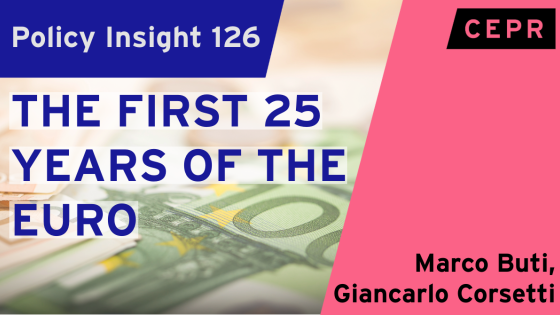A couple of weeks ago, the European Commission announced that it would work with the ECB to examine the role of the €500 note in terrorist finance, explaining that “[t]hese notes are in high demand among criminal elements who engage in physical transportation of cash due to their high value and low volume” (European Commission 2016).
Last week, the European Commission (ECOFIN) added pressure, asking the Commission and ECB to “consider appropriate measures regarding high denomination notes, in particular the €500 note…and to report its findings to the Council no later than 1 May 2016” (ECOFIN 2016). Yet some ECB Board members will obviously take some convincing that anything needs to change. For example, Yves Mersch remarked, “[t]here are policemen who are having opinions on this matter…I would be very happy if any substantiated evidence would be shipped to the ECB” (Bloomberg 2016).
Is the €500 note a tool for terrorists and criminals?
Or is the bill something law-abiding citizens use legitimately to make payments and keep their savings? Whilst there is little in the way of robust aggregate data, the evidence is pretty clear. The €500 note plays little role in the legitimate economy, yet is the preferred payments instrument for tax evaders, criminals, and terrorists.
Most EZ citizens have never possessed a €500 note. Even in Germany, one of the more cash-intensive countries in the Eurozone, a tiny fraction of 1% of the population hold a €500 note in their wallet at any one time (Bartsch et al. 2011). Many shops refuse to accept them. In short, they play little role in everyday – legitimate – economic life.
Yet €300bn of €500 notes have been issued, so someone has them. Some proportion are hoarded at home by people who prefer to keep their savings under the bed or in a safe, rather than in a bank. Yet it appears that most are held and used in the underground economy – by tax evaders, criminals, terrorists, and corrupt officials. According to analysis conducted by the Bundesbank, perhaps half remain in the Eurozone, the rest elsewhere in the world, particularly in Russia and the Balkans (Bartsch et al. 2011).
Evidence from consumer surveys
For obvious reasons, there’s no hard data on who holds €500 notes and what they are used for. But the contrast is striking. Look at surveys of consumer payment behaviour, and the €500 note plays a negligible role. Then look at cases where the authorities have successfully seized cash from drug traffickers or penetrated terrorist financing networks. Where significant sums are involved, the illegal cash is almost invariably in €500 notes or US$100 bills.
Indeed, the $100 bill and the €500 note are the payment instruments of choice for criminals across the world. Of course, the $100 bill is worth significantly less than the €500 note, but with over $1 trillion outstanding, the $100 bill is ubiquitous in criminal and corruption seizures all over the world. There are roughly thirty $100 bills for every US citizen, but only about 2% of American citizens have one in their wallet (Federal Reserve Bank of Boston 2014).
For those pursuing illicit activities, high denomination notes such as the €500 offer all the advantages of cash whilst minimising the drawbacks. From a criminal perspective, cash offers an unbeatable combination of acceptability and simplicity, plus anonymity and lack of a transaction record.
Table 1 shows the advantages of cash versus other payment mechanisms from such a perspective. But try transporting significant sums of money in cash and its bulk and weight quickly become a problem. $1m equivalent in $20 bills weighs 50kg and takes four briefcases, too much for one courier. In $100 bills, the same amount weighs 10kg and fits into a single good-sized briefcase. In €500 notes, the equivalent value is 2.2kg and fits in the corner of a briefcase. No wonder the €500 note is the payment instrument of choice for cocaine smugglers.
Table 1. Attributes of different payment mechanisms from a criminal perspective

Source: Own analysis.
Making life harder for criminals
Getting rid of high denomination notes would not eliminate tax evasion, crime, terrorism, and corruption. But it would make life harder for those pursuing such activities, raising their costs and increasing the risks of detection. They would find substitutes – lower denomination notes, Bitcoin, disguising transactions through the banking system, even gold and diamonds. Yet each of these is, in one way or another, more costly, less convenient, and more prone to detection. The impact would be greatest where criminals are looking to move large sums of money across borders without being detected. There would not be much effect on petty crimes such as pickpocketing, or low-level tax evasion such as waiters not declaring tips. But for high stakes illegal activities – such as organised crime, large-scale tax evasion and corruption, or terrorist finance – removing high denomination notes would cause significant disruption to the way they operate.
How much impact there would be depends on how the elimination of high denomination notes is executed. If the ECB removes the €500 note but simply increases issuance of the €200, the impact would be modest. In a similar vein, if criminals can easily switch to the $100 bill or the CHF1,000 note, the benefits would be limited. So the best approach would be to eliminate all high denomination notes. There are not that many of significance and they are almost all issued by the rich, advanced economies. From the perspective of transnational organised crime, the most significant by far are the €500 and $100, although others such as the CHF1000, ¥10,000, sing$1,000, HK$1,000 and £50 would ideally be removed as well. Amongst middle-income countries, only Saudi Arabia and Russia have high denomination notes of any real significance.
Figure 1. High denomination notes in the advanced economies

Source: Team analysis.
Figure 2. High denomination notes in middle income countries

Source: Team analysis.
What are the counter-arguments?
Those who like hoarding their savings at home would be somewhat inconvenienced. Yet this would be a serious issue for only a tiny minority of wealthy people. The vast majority of people don’t save at home, and in any case most people don’t have such large savings that having to hold them in lower denominations would pose a significant problem. We also have to treat with a degree of scepticism people’s explanations for why they want to hold large sums of cash outside the banking system. For some it may be due to genuine fears about the stability of banks, despite the protection of deposit insurance. For many, the real reason is that they don’t want to have to explain the origins of the cash. For example, across the Eurozone nearly €200bn of VAT is evaded every year (European Commission 2012). That means people or businesses have received a much larger sum of revenues on which VAT has not been paid. Some of this will have filtered back into the banking system, or been spent, but some will be hoarded, and largely in high denomination notes.
Central banks would also lose seignorage – the income they gain from issuing cash. Cash is equivalent to an interest-free loan to the central bank, so seignorage is the income on the assets funded with these loans. Yet seignorage is negligible or even negative in the current interest rate environment. Even where seignorage is positive, it is easy to demonstrate that the potential loss is far outweighed by the potential gains from reducing cash-based tax evasion and crime.
Some react negatively to the idea of eliminating high denomination notes because they see it as a step on the slippery slope towards getting rid of cash altogether. That is not the intent of this proposal (see Sands 2016). Despite the ever-increasing availability and cost-effectiveness of electronic payment mechanisms, cash still plays an invaluable role as an incredibly convenient payment mechanism for low-value transactions and for informal or person-to-person contexts like giving a child pocket money. Moreover, there is undoubtedly merit in the privacy that cash offers. We don’t want the state being able to pry into every purchase we make. But you don’t need high denomination notes for the everyday transactions that cash works so well for. And whilst privacy is a legitimate concern, should it extend to those activities that require bundles of high denomination notes? The evidence would suggest that a very large proportion of these activities involve breaking the law in one way or another.
Another argument sometimes put forward is that eliminating high denomination notes will make no difference. Yet the fact that in the underground economy €500 notes and US$100 bills often trade above their face value is compelling evidence of their utility to criminals.
Looking specifically at terrorist finance, some point to the fact that terrorist attacks often cost very little. For example, the Madrid train bombings cost around $10,000 and the Charlie Hebdo attacks about €6,000. Yet terrorist organisations need to source and distribute much larger sums to recruit and train members, buy weapons, and maintain systems of patronage. To secure such funds, they often rely on a combination of oil smuggling, drug trafficking, protection rackets, and donations. Very little of this activity touches the banking system. Most is conducted in cash, or through non-bank networks such as the hawala system. For example, a joint operation between the US Drug Enforcement Agency, Europol, and national agencies recently revealed a cocaine smuggling network used to fund Hezbollah that involved €500 notes being taken from Europe to Lebanon plus hawala transactions between Lebanon and Colombia (US DEA 2016).
Concluding remarks: A necessary but not sufficient step
Getting rid of high denomination notes would not on its own stem the flow of funds to support terrorism. But on the other hand, we have little chance of getting a grip on terrorist finance if we don’t get rid of such notes.
Banks, regulators, and crime agencies are investing heavily in systems and capabilities to identify and interdict illicit transactions through the banking system. Yet we are relatively powerless in understanding, let alone disrupting the even greater flows that take place in cash. Moreover, the better banks get at “Know Your Customer” and transaction surveillance, the more attractive high denomination notes will be to criminals. So eliminating high denomination notes would complement existing financial crime initiatives.
Eliminating the €500 note would put Europe on the front foot in the fight against tax evasion, financial crime, terrorist finance and corruption. Quite apart from the direct impact on high stakes illicit activities, it would be a powerful signal of the European Community’s determination to tackle such scourges. Furthermore, this is not a difficult policy to implement. The first step would be to turn off the printing presses. Then a range of measures can be used to accelerate withdrawal of the outstanding stock from the system, such as threshold limits on the use of cash, or constraints on where such notes can be used.
References
Bartsch, N, G Rosl and F Sietz (2011), “Foreign demand for euro banknotes issued in Germany: estimation using direct approaches”, Deutsche Bundesbank Discussion Paper Series 1, No. 20.
Bloomberg (2016), “ECB Wants Proof That 500-Euro Note Helps Criminals, Mersch Says”, 4 February. [http://www.bloomberg.com/news/articles/2016-02-04/ecb-wants-proof-that-500-euro-note-helps-criminals-mersch-says]
European Commission (2012), “Study to quantify and analyze the VAT gap in the EU-27 Member States”, TAXUD/2012/FR316, Brussels.
European Commission (2016), “Communication from the Commission to the European Parliament and the Council on an Action Plan for Strengthening the Fight Against Terrorist Financing”, COM (2016) 50/2, Brussels.
ECOFIN (2016), Outcome of Proceedings, 12 February, Brussels. [http://data.consilium.europa.eu/doc/document/ST-6068-2016-INIT/en/pdf]
Federal Reserve Bank of Boston (2014), “US Consumer’s Holdings and Use of $100 Bills”, Research Data Report No. 14-3.
Sands, P (2016), “Making it Harder for the Bad Guys: The Case for Eliminating High Denomination Notes”, Mossavar-Rahmani Center for Business & Government Associate Working Paper No. 52. [http://www.hks.harvard.edu/centers/mrcbg/publications/awp/awp52]
US Drug Enforcement Agency (2016), “DEA and European Authorities Uncover Massive Hizballah Drug and Money Laundering Scheme”, 1 February [http://www.dea.gov/divisions/hq/2016/hq020116.shtml]





